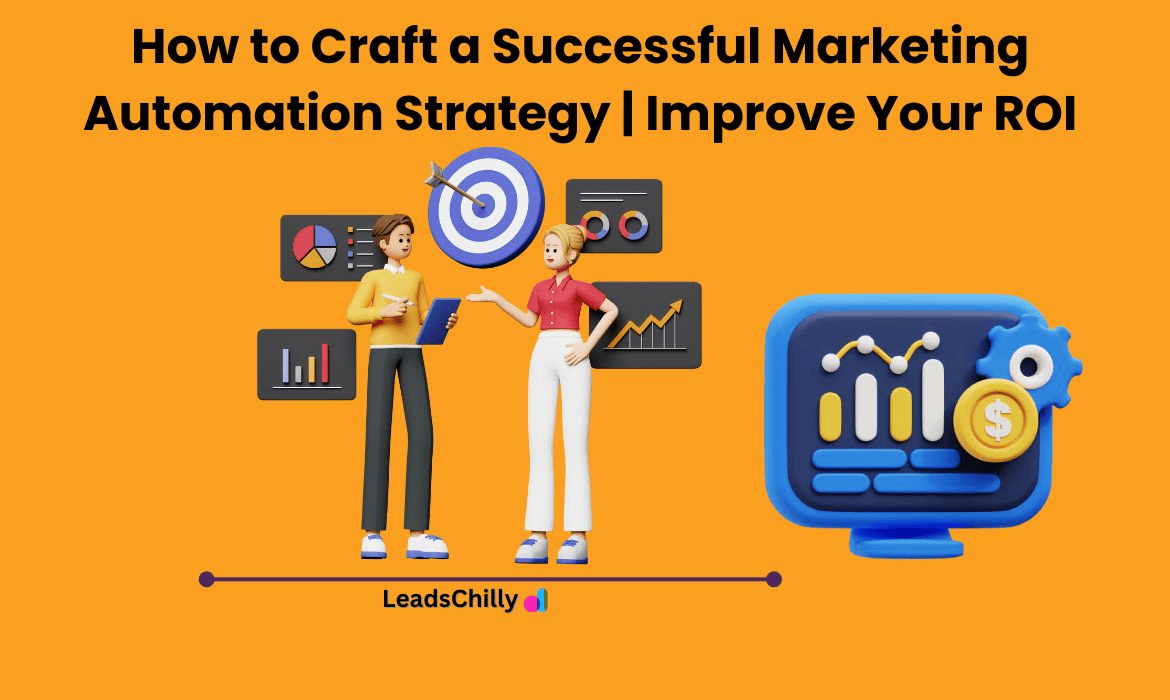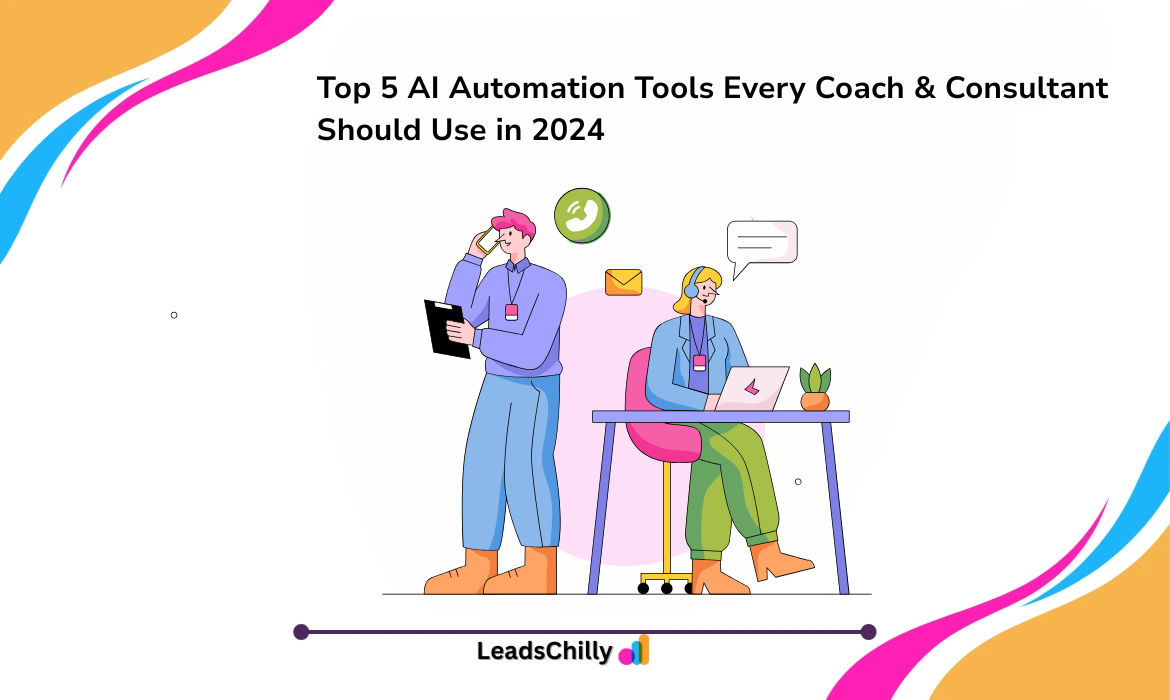Marketing automation is changing how brands connect with their customers. By using technology to automate repetitive marketing tasks and workflows, brands can simplify their marketing operations and enhance their campaigns. However, building a successful marketing automation strategy requires careful planning, proper implementation, ongoing optimization, and regular analysis.
Global marketing and sales and an increasing number of marketing channels targeting niche audiences will contribute to the growth of the marketing automation sector over the next five years. The market is forecast to increase from $2.9 billion in 2020 to $6.6 billion in 2026.
In this article, we’ll discuss the essential steps in the creation of a successful marketing automation strategy.
What Is a Marketing Automation Strategy?
A Marketing Automation Strategy is a plan for using software to handle marketing tasks automatically. Instead of doing everything manually, you use tools to send emails, manage social media, and track customer interactions. This makes your marketing more efficient and lets you reach your audience with the right message at the right time.
What Are the Benefits of a Marketing Automation Strategy?
- Save Time: Automate repetitive tasks so you can focus on bigger goals.
- Improve Customer Experience: Send personalized messages that engage your audience.
- Boost ROI: Make the most of your marketing budget by focusing on what works best.
- Better Data Insights: Learn from customer behavior to make smarter decisions.
- Scale Your Efforts: Grow your reach without adding more to your workload.
How Does Marketing Automation Work?
Marketing automation tools collect data from different places, like your website, social media, and emails. This data helps you understand what your customers are doing and allows you to create automated actions, such as sending a welcome email when someone signs up or showing ads to people who left items in their shopping cart.
For example, when a new user signs up for an account, it can automatically send them a welcome email, start a series of onboarding messages, and add their information to a spreadsheet. This kind of automation can save marketers hours of work each week.
Another type of marketing automation that’s growing quickly uses artificial intelligence (AI) to make campaigns better. For instance, some tools use AI to find the best time to send an email. AI can also help create content by suggesting keywords, scoring headlines, and more.
Marketing automation can be used throughout the entire customer journey — from the moment a potential customer first hears about you to when they start telling their friends about your brand.
What Are Some Examples of Marketing Automation?
- Email Drip Campaigns: Send a series of emails to new subscribers automatically.
- Behavior-Based Triggers: Set actions based on what customers do, like sending a reminder email if someone abandons their cart.
- Lead Scoring: Give scores to leads based on their actions to focus on the most promising ones.
- Dynamic Content: Show different content to different people based on their interests and actions.
How to Create a Marketing Automation Strategy?
Step 1: Define Your Goals
Think about what you want to achieve. Is it more sales, more leads, or better customer engagement? Knowing your goals will help you design a strategy that works for you.
Step 2: Set Benchmarks and Measure?
Decide which numbers are important for you to track. It could be how many people open your emails, click on your links, or make a purchase. These benchmarks will show if your strategy is working.
Step 3: How to Map Your Customer Journey?
Understand your customer’s path from the first time they hear about you to when they buy from you. This will help you find the best points to use automation, like sending welcome emails or follow-up messages.
Step 4: How to Choose the Right Tools?
Pick tools that fit your needs. Look for ones that help you automate emails, manage social media, and track performance.
Step 5: How to Implement and Review?
Start with a small campaign to see how it goes. Check your results and make changes if needed to keep improving.
What Are Some Marketing Automation Best Practices?
- Personalize Your Messages: Use customer data to send content that feels personal.
- Use Multiple Channels: Combine emails, social media, and text messages for a stronger strategy.
- Score Your Leads: Focus on the leads that are most likely to convert.
- Keep Your Data Clean: Regularly update your contact lists to remove inactive users.
What Can We Learn from Real Customer Experience?
How Did Verizon Improve Customer Experience?
Verizon improved customer experience by connecting their sales and support teams. This collaboration helped them serve customers better and build loyalty.
What Is Taylor Swift’s Secret to Customer Loyalty?
Taylor Swift is great at engaging with her fans. She uses social media and personalized messages to keep them loyal, which can teach businesses a lot about customer loyalty.
Why Are Real-Time Customer Insights Important?
Gathering real-time feedback helps you understand what customers think, so you can quickly adjust your strategy to meet their needs.
How to Develop Complete Marketing Automation from Scratch?
Step 1: How to Research Your Data?
Look at your current customer data to understand who they are and what they want. This will help you tailor your marketing efforts.
- Know Your Customers: Find out their demographics, buying habits, and preferences.
- Check Out Competitors: See what others in your industry are doing and find gaps to fill.
Step 2: How to Define Your Ideal Customer?
Create a profile of your perfect customer, including their age, interests, and needs. This helps you target the right people with your marketing.
Step 3: How to Set Your Goals?
Decide what you want to accomplish with your marketing automation — more sales, better engagement, or something else?
Step 4: What Metrics Should You Track?
Choose the numbers that matter most, like conversion rates or customer lifetime value. These will help you track progress and success.
Step 5: How to Plan Your Strategy?
- Define Goals and Objectives: Clearly state what you want to achieve.
- Segment Your Customers: Group similar customers together.
- Choose Your Channels: Decide where you will run your campaigns (email, social media, etc.).
- Pick the Right Tools: Choose software that fits your needs.
- Assign Responsibilities: Make sure everyone knows their role in executing the strategy.
Step 6: Which Campaigns Should You Select?
- Welcome Campaigns: Introduce new customers to your brand.
- Onboarding: Help new users understand how to use your product or service.
- Lead Nurturing: Educate leads on the benefits of your offerings.
- Conversion Campaigns: Turn free trials into paying customers.
- Upsell and Re-engagement: Offer more to current customers and win back inactive ones.
By following these steps and best practices, you can create a powerful marketing automation strategy that enhances the customer experience, drives conversions, and boosts your ROI.
Conclusion: Time to Take Action!
Creating a successful marketing automation strategy involves several key steps. Brands must set clear goals, identify their target audience, understand their customers’ journey, craft personalized content, set up automated workflows, track results, and keep improving their campaigns. While this may seem like a lot of work, the benefits are worth it — marketing automation can boost sales, build stronger customer loyalty, and deliver a great customer experience.
Ready to simplify your marketing automation and see real growth? With LeadsChilly, you can streamline every step of your strategy — from setting goals and targeting the right audience to personalizing content and optimizing campaigns.
Try LeadsChilly today with our free 14-day trial and start turning your marketing efforts into increased sales and stronger customer loyalty. Your path to a successful marketing automation strategy starts here!
Frequently Asked Questions
A strategy is an overall plan using automation tools, while campaigns are specific efforts within that strategy.
It helps with lead nurturing, segmentation, personalized content, and performance tracking.
Start with data research, define your audience, set goals, pick metrics, and outline your strategy.
Start small, use multi-channel strategies, track everything, and clean data regularly.
Use metrics like open rates, conversion rates, and ROI to measure effectiveness.




Comments are closed.